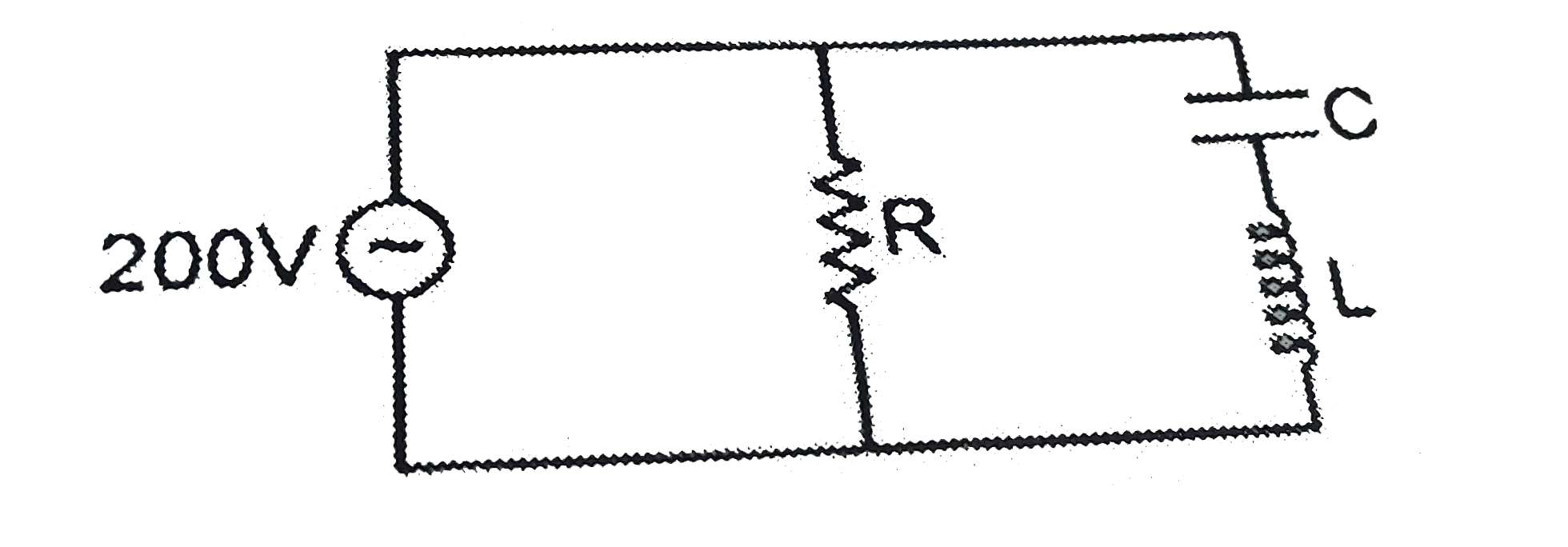In an AC series L−C−R circuit, applied voltage is
V=(100√2sin(ωt+45∘))V
Given that, R=30Ω, XL=50Ω and XC=10Ω Now match the following two columns.

Video Solution
Text Solution
The correct Answer is:(A-r); (B-p) ; (C-q); (D-s)
As, Z=√R2+(XL−XC)2=50Ω
I=VZ=100V50Ω=2A
P=I2R=120W
VR=IR=60V
VL=IXL=100V
|
Similar Questions
Knowledge Check
In an L-C-R series circuit R = 10Ω,XL=8Ωand XC=6Ωthe total impedance of the circuit is -
A10.2ΩB17.2ΩC10ΩDNone of the aboveIn an AC series circuit, R=10Ω,XL=20Ω and XC=10Ω.Then, choose the correct options
AVoltage function will lead the current functionBTotal impedance of the circuit is 10√2ΩCPhase angle between voltage function and current function is 45∘DPower factor of circuit is 1√2In a series L-C-R circuit XL350Ω,XC=200ΩandR=150Ω.
A0∘B30∘C15∘D45∘
Match the following two columns for L-C-R series AC circuit.

View SolutionIn series LCR circuit 3=ΩXL=8Ω,XC=4Ω, the impendance of the circuit is:
View SolutionIn a series L−C circuit, the applied voltage is V0. if omega is very low, then the voltage drop across the inductor VL and capacitor VC are
 .
.
View SolutionIn the circuit diagram show, XC=100Ω,XL=200Ω,&R=100Ω

View SolutionAn alternating voltage V=100sinωt is applied across an LCR circuit as shown. At the instant when voltage drop across source is 50√3 volts then at that instant
R=30Ω XL=60Ω XC=20Ω

View Solution


